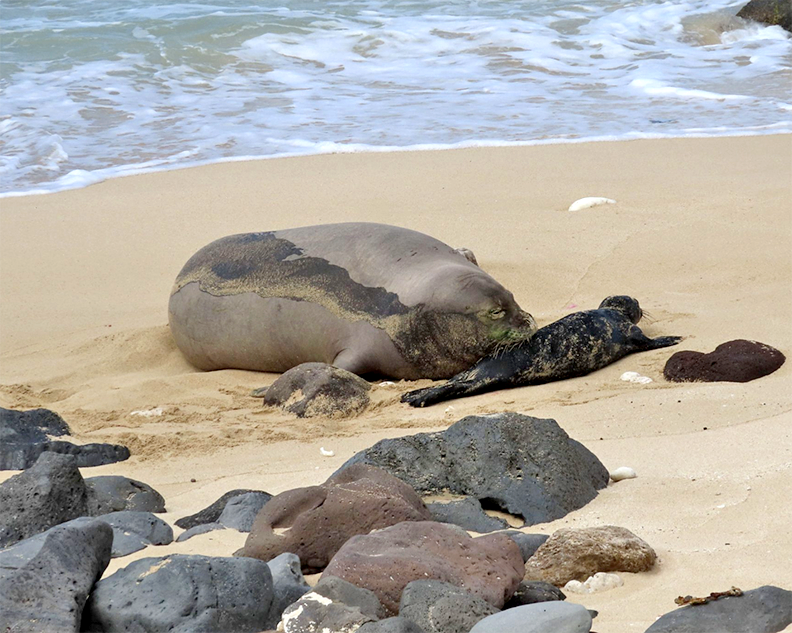By Jan TenBruggencate
A high school classmate the other day said that she goes nuts if she doesn’t get up to Koke`e at least a weekend every month.
Away from the phones and the Internet, and the daily hassles of everyday life. Away from civilization and into a natural world.
There is something healing about the wilderness. Former U.S. Supreme Court Justice William O. Douglas recognized it with these words:
“To be whole and harmonious, man must also know the music of the beaches and the woods. He must find the thing of which he is only an infinitesimal part and nurture it and love it, if he is to live.”
I don’t know that I’ve gotten so philosophical about it, but certainly the experience of getting calm by getting away is a common one.
After months away from Kaua`i’s mountains, I took a drive with friends to Koke`e State Park, and four-wheeled out to Kumuwela Ridge.
There, patches of largely native forest still thrive. Sandalwood trees under the koa and `ohi`a, and halapepe and alani under the sandalwood trees, and ferns and mosses underfoot. An occasional thin-trunked loulu, and tangles of maile twisting up the various trees.
We walked and smelled the forest, heard the wind clattering in the treetops, watched mist droplets catching the sun where it slipped through the canopy.
It is, of course, not all just fine in the Kaua’i forest. We could smell the rooting pigs, and see the invasive weeds—the lantana and clidemia and black wattle, and the monocultures of planted eucalyptus—with nothing growing beneath them.
But it is still away, in that very essential manner. A place that doesn’t get cell phone reception, where email alerts don’t beep on your hip, where your conversations wax poetic.
As we walked by one patch of good forest, a Kaua’i `elepaio bopped to the end of a branch to check us out. This native member of the old-world flycatcher clan is perhaps the pleasantest bird in the forest.
It hops and springs from branch to branch, just out of reach, its tail erect, its curious eye gleaming. The fat little body, not much bigger than a golf ball, belies the agility it displays, flitting here and there.
This, of course, was the bird canoe-builders used to warn them of rotten trees before they took the time and effort to chop them down. The `elepaio is insectivorous, munching primarily on spiders and bugs of various kinds. Spiders even help it nest, since it will use spider webs to help hold together its tiny nesting cups. So one assumes Hawaiians recognized that an `elepaio working a tree meant that there was some corruption there, and that the birds were feeding on the insects that fed on the rot.
The birds and the trees, and the essential awayness of the forest, provide in addition to watershed, that special thing that Richard E. Dodge wrote of in 1915: the “ever-present power of recuperation.”
Discover more from ForKauaiOnline
Subscribe to get the latest posts sent to your email.





Leave a Reply